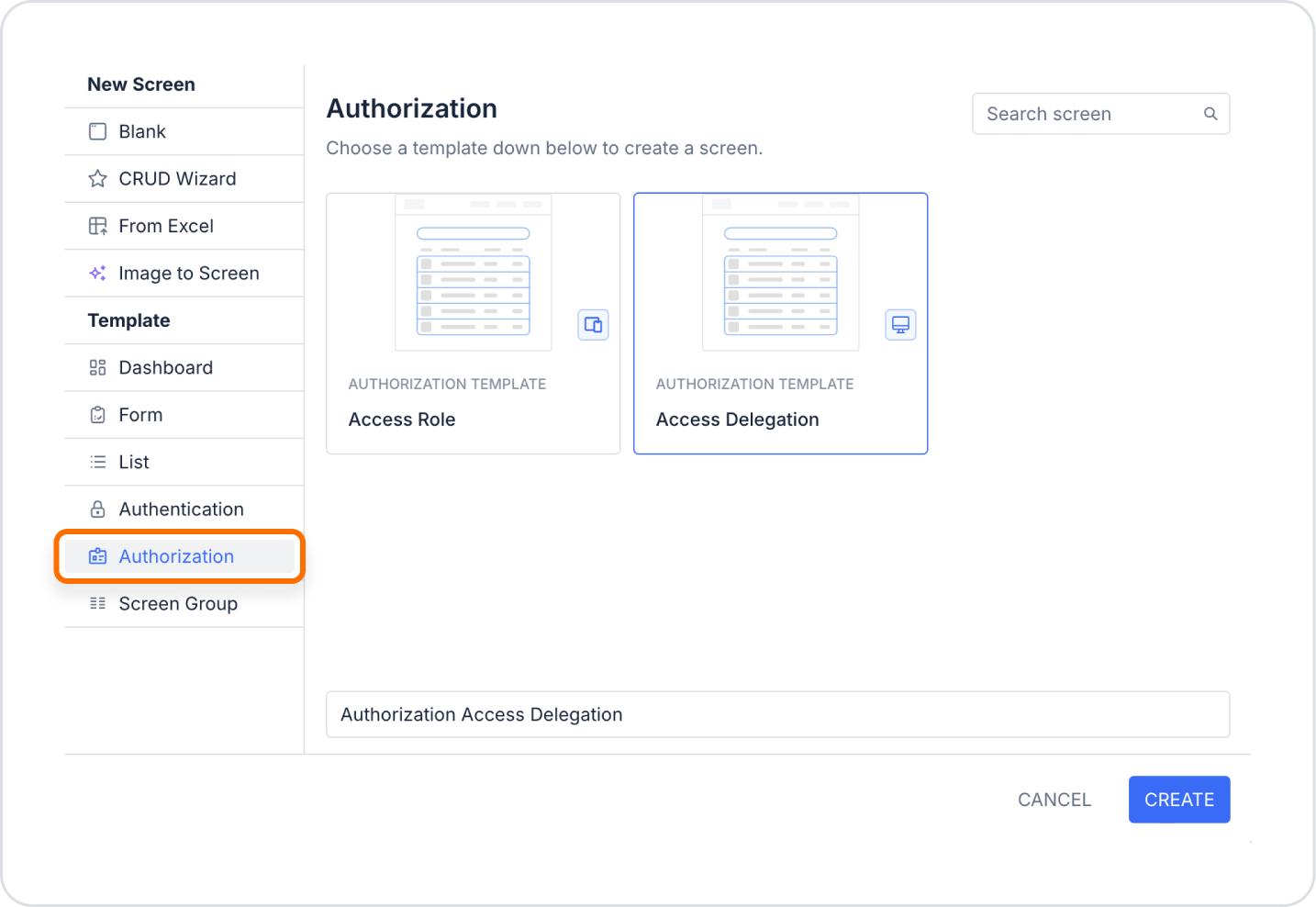

During the application development process with Kuika, you can extend and customize your application by creating new screens. To create a screen, click on the “+” icon in the Screens Panel header and select New Screen from the drop-down menu. In the New Screen modal that appears, according to your needs:
With templates and tools, you can quickly implement your screen designs and streamline your development process. In this course, you will learn how to create screens that fit your needs.

Blank screen templates are basic screens that initially have no elements on them. These templates are available in three different variants:
How to Create a Blank Screen?

CRUD Wizard is a tool that allows you to create screens in a few seconds, easily defining Create, Read, Update and Delete operations connected to your database. This structure is an ideal solution especially for fast development processes and standard CRUD operations.
How to Create a Screen with CRUD Wizard?

CRUD Wizard Settings
1. Datasources
2. Screen Type
3. Layout Design
4. Choose Screen and Properties
5. Screen Name

The From Excel feature allows you to import data directly into the database by importing Excel files from your device into the Database section of your application. Each page of the Excel file you upload is considered as a table and each column header is considered as a table column. The data under the column is added to the specified table. In this way, you can easily create CRUD screens with the data in the Excel file.
How to Create From Excel Screen?
From Excel Settings
1. Datasources
2. Screen Name
By integrating data from your Excel file directly into your application, you can quickly perform CRUD operations with this data.


Screen Creation
These templates are ideal for user-friendly and organized data visualization, allowing you to easily create flexible screen structures for various needs.

Screen Creation

Screen Creation
These templates help you quickly create functionality such as listings and searches and offer different layout options.

Kuika offers various Authentication screen templates to speed up the application development process. These templates facilitate common authentication processes such as user login, registration, password reset and verification processes. You can use and edit these templates according to the needs of the application you are developing.Adding a Template Authentication ScreenYou can follow the steps below to add and edit the Authentication screen template in your app:
Authentication Screen TemplatesAuthentication screen templates are available in different types. You can choose the one that suits your application's needs and make the necessary edits. Each template comes with default text contents, but these contents can be updated specifically for your application.
1. Progressive User
2. Reset Password
3. Sign In
4. Sign Up
5. User Template
6. Verification Code
Screen Creation


Screen Creation

To create a screen on the Kuika platform, click on the “+” icon in the Screens Panel heading in the UI Design module and select “New Screen” from the drop-down menu.
In the New Screen modal, you can create a blank screen or create template screens or screens with a few clicks using tools such as CRUD Wizard and From Excel. After creating a screen, give your screen a name.
You can perform the following operations by clicking the ellipsis icon opposite the name of the screen you created:
These operations facilitate screen management and provide a more organized development process.